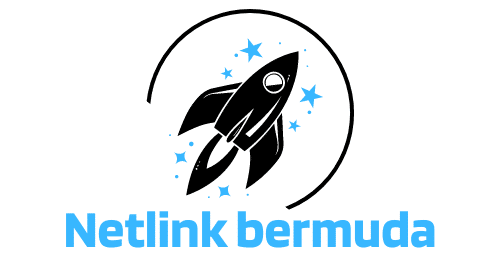Welcome to your comprehensive guide on the techniques for optimizing video streaming over 5G networks. In today’s digital era, video content has become a dominant force in our day-to-day lives. From businesses leveraging video for marketing and training to consumers using video for entertainment and communication, the demand for quality video streaming is at an all-time high. Now, with the advent of 5G networks, the potential for high-quality, low-latency video streaming is greater than ever. But how can we optimize such powerful network capabilities to deliver the best video streaming experience? Let’s delve into the subject.
Understanding the Basics: Video Streaming and 5G Networks
To fully grasp how to optimize video streaming over 5G networks, it’s important to first understand what video streaming is and how 5G networks function. Video streaming refers to the continuous transmission of video files from a server to a client. In other words, users can start watching a video while the rest of it is still being transmitted.
A lire aussi : How can IoT be utilized to improve environmental monitoring and management?
5G, on the other hand, is the fifth generation of mobile networks. Compared to its predecessors, it boasts much higher data transfer rates, lower latency, and the ability to connect many more devices simultaneously. Such qualities make 5G a perfect network for video streaming, as users can enjoy content without any hiccups or buffering.
However, despite these beneficial attributes, the optimization of video streaming over 5G networks still requires specific techniques and strategies. Several factors affect video streaming performance, including data compression, content delivery networks (CDN), and user experience.
Avez-vous vu cela : How do you design a fault-tolerant distributed system for financial applications?
Tapping into the Power of Data Compression
Data compression is a critical aspect of video streaming optimization. Essentially, it involves reducing the size of the video file while retaining the quality of the content. The smaller the file, the faster it can be transferred over the network, leading to a better streaming experience for the user.
Various figures and strategies can help optimize data compression for 5G networks. One such technique is the use of advanced video coding standards like High Efficiency Video Coding (HEVC). This standard is designed to provide higher quality videos at lower bit rates, making it ideal for 5G-based video streaming.
In addition to HEVC, there are other compression algorithms like AV1 and VVC that support 8K resolution, HDR, and 360-degree videos. These algorithms play a crucial role in ensuring that video data is efficiently compressed and delivered over the 5G network for an optimal user experience.
Maximizing Content Delivery Networks (CDN)
CDNs, like CacheFly, play a vital role in delivering video content to users quickly and efficiently. A CDN is a network of distributed servers that deliver content to users based on their geographic location. This means that when a user requests a video, the CDN will deliver it from the closest server to the user, reducing latency and optimizing the overall streaming experience.
In the context of 5G networks, CDNs can offer even more substantial benefits. The high data transfer rates and low latency of 5G networks mean that CDN servers can deliver content to users at unprecedented speeds. As a result, users can enjoy high-quality, uninterrupted video streams.
However, optimizing CDN performance for 5G networks requires specific strategies. For instance, CDN providers need to ensure that they have enough servers located in optimal locations to leverage the full potential of 5G networks. Furthermore, providers need to use advanced load-balancing algorithms to efficiently distribute network traffic among their servers, further enhancing the user’s streaming experience.
Prioritizing User Experience
User experience is a critical factor to consider when optimizing video streaming over 5G networks. It’s not just about delivering high-quality videos quickly; it’s also about ensuring that users find the streaming process smooth and effortless.
Several techniques can be proposed to optimize user experience in video streaming. One such technique is adaptive bitrate streaming. This technique involves adjusting the quality of the video stream in real time, based on the network conditions and the device capabilities. This ensures that users always receive the best possible quality that their device and network can support, thus improving the overall user experience.
In addition to this, providers should also consider implementing a user-friendly interface and intuitive controls for their streaming applications. This means including features like video previews, easy navigation, and personalized recommendations, all of which can significantly enhance the user’s streaming experience.
Implementing Quality of Service (QoS) Measures
Quality of Service (QoS) is a network management concept that is used to ensure the performance of data applications. In video streaming, QoS measures are crucial to guarantee the delivery of high-quality, low-latency video content.
One way to implement QoS in 5G networks is through network slicing. This involves dividing the network into multiple virtual networks, each with its own resources and services. For instance, one network slice could be dedicated to video streaming, with specific QoS measures in place to ensure high performance.
In addition to network slicing, other QoS measures like traffic prioritization and bandwidth allocation can also be used. These techniques ensure that video streaming applications receive the necessary network resources to deliver high-quality, uninterrupted content to the user.
In closing, the optimization of video streaming over 5G networks is a multifaceted process that involves various techniques and considerations. By understanding and implementing these techniques, providers can take full advantage of the capabilities of 5G networks, delivering a superior video streaming experience to their users.
Leveraging Science Engineering for Low-Latency Video Streaming
Science engineering plays a pivotal role in optimizing video streaming over 5G networks, particularly in achieving low latency. Latency refers to the delay between the user’s action and the response from the server. In video streaming, low latency is crucial as it means a smoother, more seamless viewing experience – with little to no buffering or lag.
One engineering method that helps in reducing latency is the use of Edge Computing. This approach involves processing data near the edge of the network, close to where it is being consumed, rather than in a centralized data-processing warehouse. This proximity reduces delay, enhancing the responsiveness of the video stream.
5G networks, with their superior speed and capacity, are well-suited to support edge computing. This synergy between 5G and edge computing paves the way for real-time video streaming experiences, which are vital for applications like live streaming and Interactive Video.
Implementing such science engineering techniques necessitates collaboration between network providers, content delivery platforms, and the CacheFly team. This team’s expertise in CDN solutions can be instrumental in strategically placing edge servers to optimize low-latency video streaming over 5G networks.
Improving Video Quality with Advanced Technologies
Video quality is a direct determinant of user experience in video streaming. It is imperative that users receive high-quality video content without any degradation or disruptions. This is where advanced technologies like Machine Learning (ML) and Artificial Intelligence (AI) come to the fore.
Machine Learning algorithms like the KNN classifier can be used to predict and manage network traffic, reducing packet loss – a key factor affecting video quality. By anticipating traffic patterns and making real-time adjustments, these algorithms can ensure the smooth delivery of video content, improving the overall video quality.
In the context of 5G networks, AI can be used to optimize the allocation of network resources. For instance, AI algorithms can intelligently distribute bandwidth among different users and services, prioritizing video streaming whenever necessary to maintain high video quality.
Furthermore, the Internet of Things (IoT) also plays a significant role in enhancing video quality. IoT devices can provide valuable user data, aiding in the personalization of content delivery. This targeted approach can optimize the video delivery process, leading to an improved user experience.
Optimizing video streaming over 5G networks is a comprehensive process that demands a balanced blend of foundational understanding, advanced techniques, and user-centric strategies. By leveraging the power of data compression, maximizing the use of CDNs, prioritizing user experience, implementing QoS measures, utilizing science engineering for low-latency streaming, and improving video quality with advanced technologies, providers can unleash the full potential of 5G networks.
Adopting these methods not only enhances the streaming experience but also fosters customer loyalty and market competitiveness. With the continuous evolution of technology and increasing user expectations, it is more important than ever for providers to stay up-to-date with the latest trends and techniques in video streaming optimization.
In the end, the goal is to ensure that every frame number delivers the highest quality, each video delivery is done in real time, and every user enjoys a high-quality, low-latency video streaming experience. As we move forward in this digital era, the opportunities and challenges in this field are countless. The key is to keep innovating and improving, keeping the user experience at the heart of all strategies.











